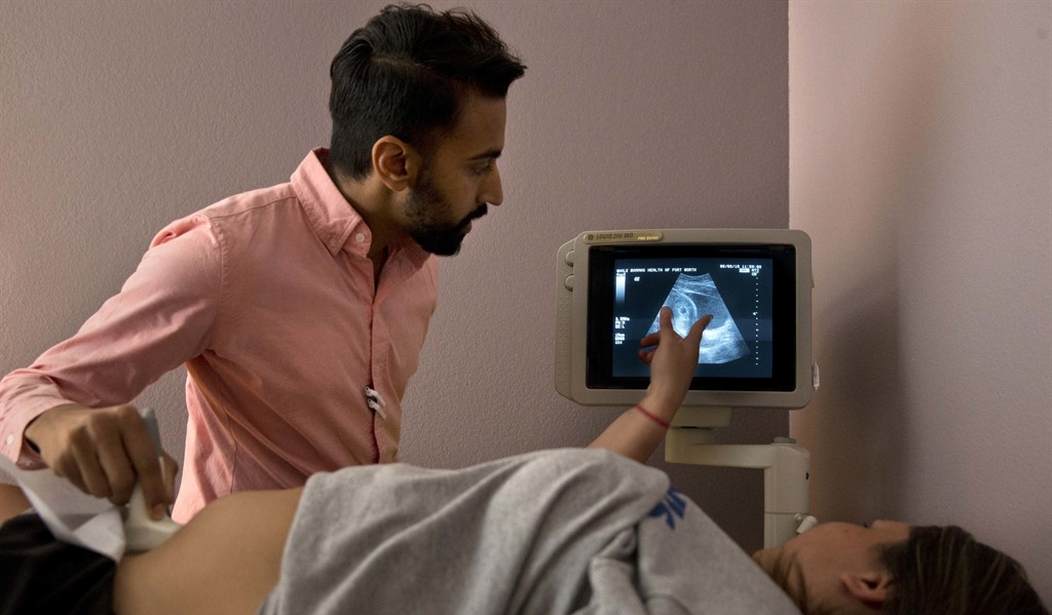PBS is attempting to enlighten Americans by airing the beginning of certain abortion procedures. But, if the network truly wants to inform viewers, it should also film the end.
On April 22, Frontline, a PBS documentary series, explored “The Abortion Divide” in America and the changes that have occurred both “inside and outside abortion clinics over 30 years.” While the film captured women beginning their abortions, it stopped short of showing abortion for what it is: the ending of an unborn human person.
Looking first at the “inside” of abortion clinics, the documentary focused on medical abortions.
“One key difference explored in the film is the availability of a different method of terminating a pregnancy: RU-486, often called ‘the abortion pill,’ which was approved by the FDA in 2000,” wrote digital reporter and producer Priyanka Boghani in the introduction. “Two women — Taryn and Megan — begin the process of a medical abortion.”
And PBS caught it on camera.
The episode took place at Philadelphia Women’s Center. At the clinic, Rebecca Mercier, M.D., urged that women can choose medical abortion “up to about 10 weeks of their pregnancy.”
“A medical abortion procedure is very similar to inducing a miscarriage,” she said. Except for one main distinction: abortion is choosing to end a life. Miscarriage is not.
Mercier then handed one woman, Taryn, a pill to begin her abortion.
“This is the first pill you’re going to take,” Mercier said. “This is the one called the Mifepristone. This is the stuff that makes the pregnancy stop growing and start to unattach a little bit from the uterus.”
Recommended
To the camera, Mercier stressed that the following day Taryn will consume “another pill called Misoprostol that helps to induce the cramping and the bleeding that will actually help her body push the pregnancy tissue out of her uterus.”
Taryn also had a moment with the camera – where she admitted she was carrying twins or “two beings.”
“What I hope I feel is a sense of peace, not only with myself and the decision that I’ve made, but also a sense of peace with these two beings that I’ve chosen not to bring into the world,” began Taryn, who is also the mother of two older children.
To her unborn twins, she said: “Thank you for choosing me. And I’m honored to be given this gift of life. And also, I can’t do it right now. I can’t accept that mantle in terms of the other lives that I’m taking care of and I’m responsible for.”
With that, Taryn popped the pill into her mouth before picking up a styrofoam cup of water to swallow.
But the second woman, Megan, wasn’t as nonchalant.
“I know I’ll definitely be sad, because if things had just been a little bit different, you know, maybe this wouldn’t have happened today,” she told the camera.
When she was handed her first pill, Megan hesitated. She lifted a water bottle towards her lips, before bringing it back down and taking a deep breath. A couple seconds later, she took a gulp of water and swallowed the pill.
PBS didn’t film the abortion procedures further. But if the network wanted to film the reality of abortion – abortion as it really is – and uncover why the majority of Americans want it restricted, it shouldn’t have stopped there.
Dr. Anthony Levatino, an obstetrician-gynecologist who performed more than 1,200 abortions before a change of heart, partnered with pro-life group Live Action in 2016 to fully describe abortion procedures. In one video, he focuses on the “two steps” of medication abortion.
“At the abortion clinic or doctor’s office, the woman takes pills which contain Mifepristone, also called RU-486,” he began. RU-486 blocks the hormone progesterone, which causes the “lining of the mother’s uterus” to break down, “cutting off blood and nourishment to the baby.”
In step two, the woman takes “takes Misoprostol, also called Cytotec” a day or two after the first pill. Together, he added, RU-486 and Misoprostol “cause severe cramping, contractions, and often heavy bleeding to force the dead baby out of the woman’s uterus.”
“The process can be very intense and painful,” he warned, “and the bleeding and contractions can last for a few hours to several days.” Most often, he said, the woman will “sit on a toilet as she prepares to expel the child which she will then flush.”
But before that happens, “she may even see her dead baby within the pregnancy sack.” If the abortion takes place at nine weeks, he said, the baby “will be almost an inch long” and the woman “might be able count the fingers and toes.”
Unlike PBS, pro-life films like Unplanned attempt to capture the horrors of abortion by showing scenes enacting it. It’s effective: the film’s director recently revealed that nearly 100 abortion workers have sought to leave their industry after watching the film.
For its efforts, Unplanned earned an R rating. That’s because, beneath the euphemisms and after the swallowed pills, abortion is graphic violence. Pro-life Americans know this – and it’s time the others found out too.

























Join the conversation as a VIP Member